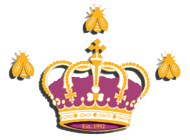The import ban has emptied shelves – so buy British
My friend was smiling in a come-off-it kind of way, but the shop assistant was serious. “There’s a honey shortage,” he said, shrugging at the empty shelf where jars once stood. “I don’t know when it will be back.”
Although “honey shortage” conjures up images of bees laying down tools, the situation is grave. Two months ago, the European Commission imposed a ban on imports of honey from China – where 40 per cent of honey on sale in our supermarkets is sourced – after it was found to be contaminated by the antibiotics chloramphenicol (linked to a rare blood disorder and leukaemia) and streptomycin (banned from food in Europe). All the supermarkets withdrew their stocks of Chinese and Chinese-blended honey which included the bestselling brands, Rowse and Gales.
Suddenly independent British honey producers, whose sales usually account for only 10 per cent of the market, have been besieged. (Amazingly, 90 per cent of honey is imported – from the US, Mexico, Argentina, Canada and Germany, as well as China.)
The Hive Shop in Battersea, South London, with 150 hives, claim that commercial honey making- heating it up to prevent crystallisation in the jar (along with filtration which removes pollen) – removes its flavour and gives it a sickly sweet tinge. Smaller producers like them cut the face off the comb then put the honey slabs in a centrifugal drum. The honey drips into a bucket, and is then passed, cold-pressed, through muslin.
“It can look kooky, be half-set, half-runny,” says Hamill, a true evangelist “But people shouldn’t be too intimidated. This is a great opportunity to explore new varieties and textures, like hawthorn, lime, wildflower, heather and sainfoin red clover).”
Hamill’s best-known customer was the Queen Mother. “She was a huge honey fan,” he says. “I met her once at Clarence House, where she told me every year a large swarm would nest in a chimney. She loved bell heather and sweet chestnut honey. She even took it away with her. Her lady-in-waiting once told me: ‘Wherever we go, you come with us.'”
The shop has proved so popular they are planning to open a cafe and bee museum (to go with the live hive in the shop). His young daughter Julia already takes wing-clipped queen bees to show off to her alarmed classmates and teachers.
Gerald Cooper of the award-winning New Quay Honey Farm near Ceredigion, West Wales, which supplies supermarkets and delicatessenS, says sales have doubled because of the shortage. The farm, the largest of its kind in Wales, is open to visitors and has a shop, tea room and live bee exhibition. More than 35,000 visitors come every year, and in 1999 a meadery was added to produce honey wines.
After two months of the crisis, demand for honey is now so high producers foresee, ironically, a shortage of the British amber nectar. Margaret Tonkin of Vivian’s honey farm, near Hatherleigh in Devon, a leading supplier in the South West, says she has been inundated with orders. “We didn’t expect it to be this drastic. We won’t run out but we, and others like us, are using up a lot of stock.”
In accordance with new safety guidelines from the European Union, Safeway and Tesco have begun restocking with own-brand honey now sourced from countries other than China.
Rowse says all its brands – without Chinese blends – are back in shops this week. Because of “ongoing rigorous testing”, Sainsbury’s says its honey stocks won’t be fully replenished till mid-May, the same for mega-producer Gales. As the shelves stay empty, British producers are thinking beyond 10 per cent of the market. Busy bees, indeed.
